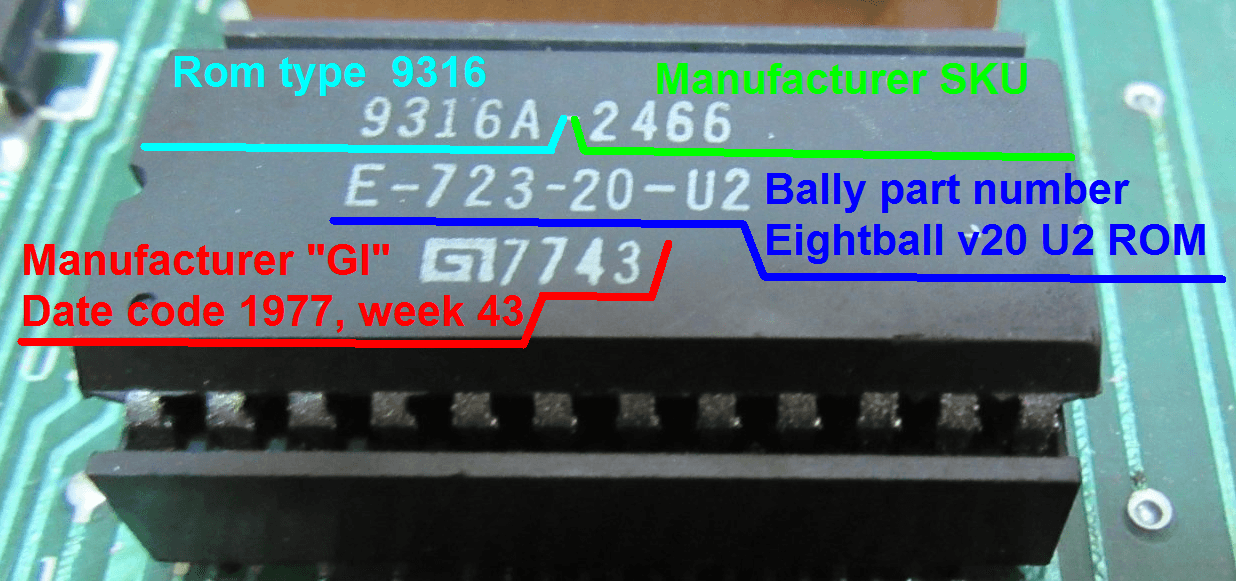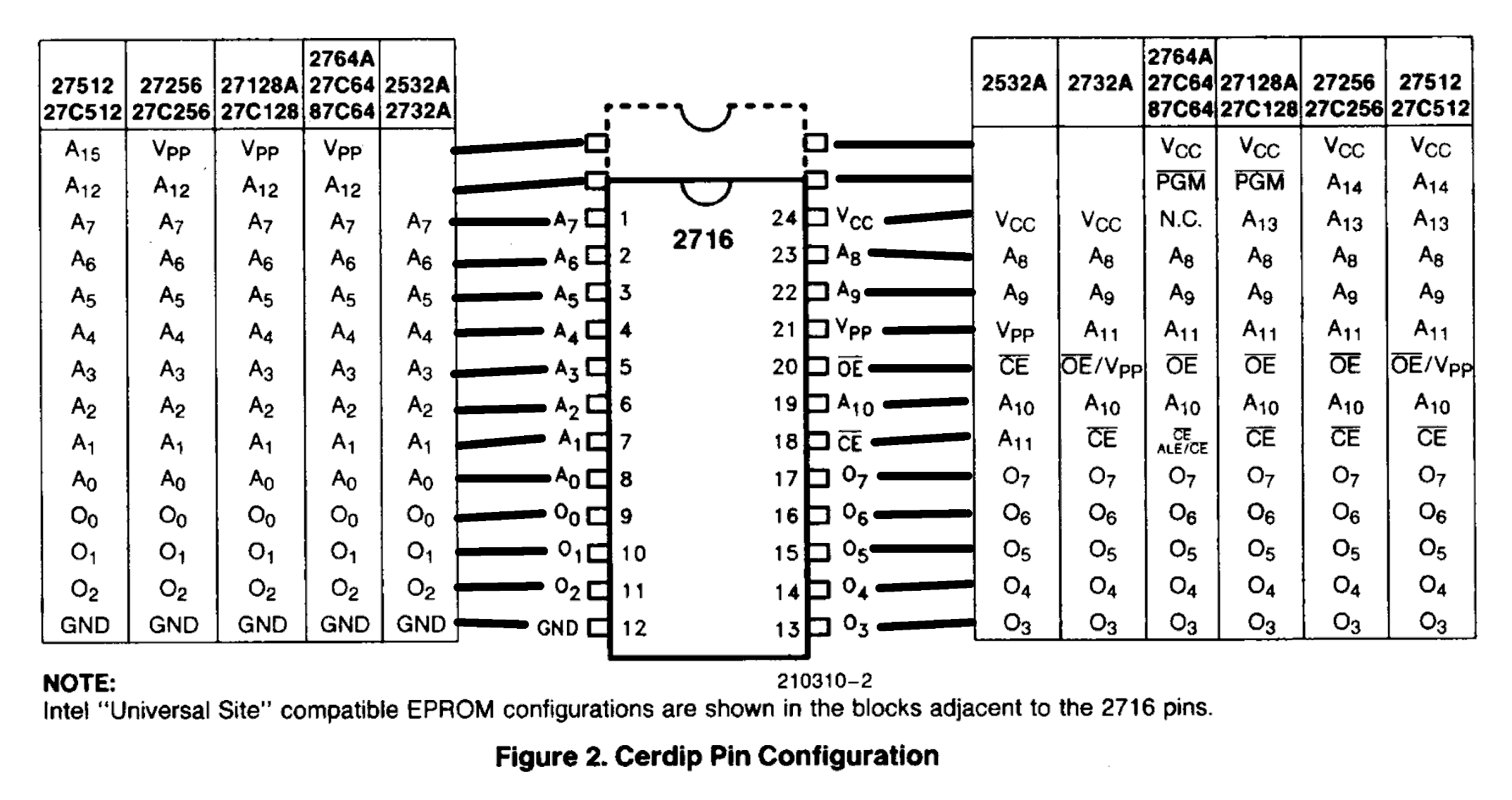I am learning a lot by reading this thread and I'm sure many others have too - thanks to all that have contributed! Another thread I also read is https://pinside.com/pinball/forum/topic/help-burning-a-stern-rom#post-4592642.
I have some follow-up questions, mainly surrounding terminology in stating size of a chip, size of a ROM image file, and corresponding pinball manufacturer documentation.
When someone refers to an EPROM or PROM only by size, say "a 512K EPROM", does the number represent Kbits or Kbytes? One example would be Stern SB157 that discusses using a "blank 512K EPROM" to update the sound OS on a Whitestar board. I looked at the biosv8.u8 file for that sound update, and Windows shows the file as 128KB (bytes) in size on my hard drive, so it would seem that Stern must have meant a chip of 512Kbytes in size, not 512Kbits. So, a 27C010 chip. But that doesn't make sense as the chip at U7 is physically smaller than a 27C010 chip. U7 (the location where the sound update chip would temporarily be installed) is described in the LOTR manual as "27256 / 27512, CPU Sound, 512K". Both of these chips would be the correct physical size for the socket at U7, so Stern must have been talking about a 512kbit EPROM after all. But neither a 27256 or 27512 chip can hold a 128Kbyte file, so I'm still missing something here. Perhaps the 128KB file size I see for the biosv8.u8 file on my hard drive is not the correct way to identify the actual size of the image in the file?
Here is another example, just in case there was something uniquely odd about the example above. If I look at the directory entry for a ROM file extracted from a zip file on my computer, and that file is shown as 128KB (KB means bytes in this case) on disk, then how does that relate to the size chip needed to burn that file to an EPROM? For example, the CPU file in the LOTR 10.0 or 10.02 zip files both result in an extracted file that is 128KB as stored on disk. The readme file says "Game ROM 1M". The LOTR manual shows U210 as "27C040 CPU Game, 1MB. The PinWiki chart shows the 27C040 as a 4Mbit / 512Kbytes chip. Why would Stern say 1MB in the manual? Would one use a 27C040 chip and just multiply the software file as many times as necessary (quadruple it) to fill the 27C040? Could one instead use a 27C010 and burn the image without multiplying it to fill the 27C010?. What about a 27C020, could that chip be used with a doubled software file? Was Stern thinking to the future in specifying a 27C040 chip, so future games could have significantly bigger code and still run on this board? Or by specifying a 27C040 chip do they for some reason really want that size chip to be used and not a smaller chip? Or was there a typo in the Stern manual and they should have said "27C010 CPU Game, 1MB"?
The Stern manual's documentation for U7 puzzles me for another reason. The PinWiki chart shows 27256 as a 256Kbit chip, and 27512 as a 512Kbit chip, so these are different size chips. Could Stern really have used either chip in U7 even though the diagram also says 512K, or is this really always a 27512 512Kbit chip?
And finally, the Stern manual's documentation for U37, U36, U21 and U17 also puzzles me for a different reason. These are described in the manual as: "M27C04000I-12FI, Voice ROM x, 8MB". PinWiki shows the 27C040 as 4Mbit chip, but Stern lists as 8MB on the diagram. What chip type is really used in these locations, a 27C040 4Mbit chip or a 27C080 8Mbit chip? I guess I could understand if the "8MB" had been a size smaller than the specified chip (could multiply the image to fill the chip), but 8MB is larger than the specified chip size! The actual image files seem to be only 1MB, so perhaps the 8MB shown in the Stern manual is a typo?
Thanks for adding some clarity!


 Collinsville, IL
Collinsville, IL



